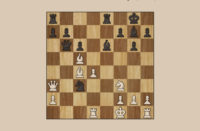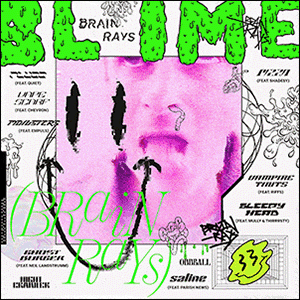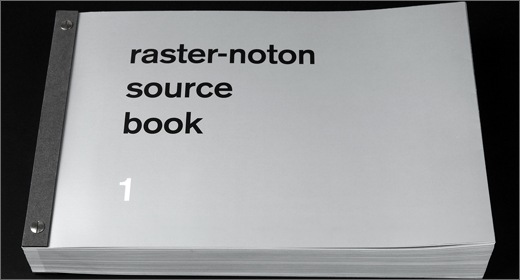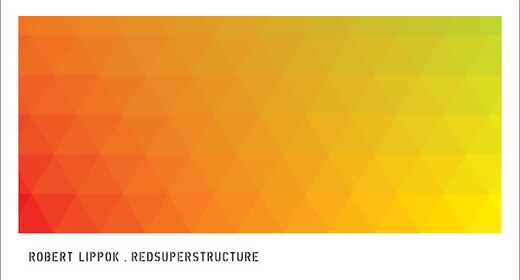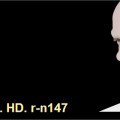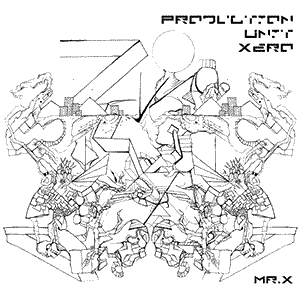Bender has gotten more rhythmically adventurous, and has also updated his palette of sounds, somehow staying faithful to that precarious notion of what is and what isn’t appropriate on R-N.
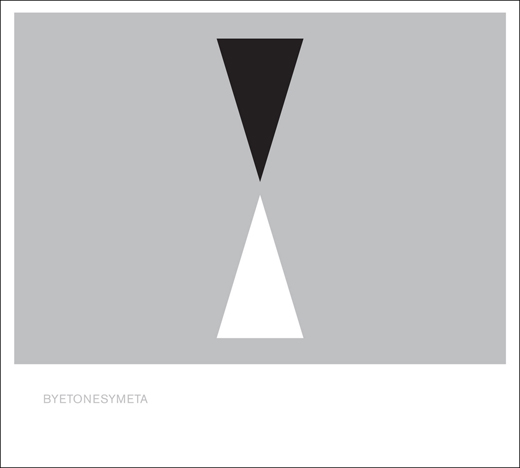
[Release page] My CD collection owes its size to the university library where I had a job during college. Working in the audiovisual department wasn’t particularly hard, as most of my duties involved retrieving videotapes for harried freshmen during finals, and I was free to do homework or whatever the rest of the time. Perks aside, the best part about the job was the paycheck, which sustained my CD-buying addiction for years. Even today it’s tough to look at my PayPal history from 2008: $70 on Ceephax Acid Crew, $50 on Tryshasla, $60 for the complete Disintegration Loops, and on and on. My junior year I took on research that crowded the job out of my schedule, effectively ending my CD hoard’s explosive growth, so now I have a collection pretty much void of the music I’ve gotten into since.
Foolishly spent, sure, but not wasted. I don’t regret, say, buying most of Merck’s catalog, or tracking down every Pub album, because I know I’ll eventually come back to them, even if that means brushing off 10 years’ worth of dust when I finally do. In reality it’s not that bad, though; occasionally an eye-catching spine compels me to pick the CD out and play it.
The label this happens most often with is Raster-Noton. Their music is great, but their packaging is really what justifies the expense of paying (in Euros, ugh) for an import from Germany.
I can always tell a Raster apart from its jewel-cased neighbors by its design – the white case, the MacBook touchpad surface, the fold-out digipak or DVD-size box, and most of all, the stately graphic design, which is usually an austere figure or pattern, fleshed out with a cold, reserved precision. The art goes uncredited, but interviews have revealed (click here for details) that Olaf Bender (better known as Byetone) has a lot to do with it, and his work is always impressive.
The title of Byetone’s 2008 breakout, Death Of A Typographer, hinted at this role. It arrived near the end of a particularly fecund period for R-N, one which saw well-received works from Alva Noto (Xerrox), Kangding Ray (Stabil), Signal (Robotron), and Frank Bretschneider (Rhythm). It was an exciting period for the label because it saw, for the first time, a much wider audience taking interest in what it had to offer, mostly because the aforementioned albums pioneered the realization of a more overtly emotional and rhythmic potential that had always been latent in R-N’s stuffy ethos. In other words, 2007 was the first year in which you could listen to R-N and enjoy it without trying particularly hard. Certainly pre-2007 R-N has its highlights, such as Mitchell Akiyama’s Temporary Music and my favorite, Mouvements by Hervé Boghossian, but the difference is that those are difficult and demand concentration, whereas Xerrox Vol. 1 is perfect to zone out to.
Death Of A Typographer was a pop album at heart, in that it was eager to please despite its straight-faced pretentions. It revealed in Bender a rhythmic sensibility I had previously thought impossible, and marked the beginning of the ongoing compromise between R-N’s asceticism and the rest of the electronic music world. Some old hallmarks were still present, most notably the iciness and surgical approach to sampling, but suddenly there wasn’t much else separating Death Of A Typographer from any other glitch-influenced work in a similar vein. Bender, too, proved to be an excellent agent of change, as Death Of A Typographer felt like the natural product of a veteran’s execution of a long-pondered shift, as opposed to the results of an outsider’s dubious attempt to “update” R-N’s sound. Anyone who’s listened to Emptyset knows the difference.
2011 finds R-N better-known, better-regarded, and in the midst of an even busier release cycle, one that includes new projects from Kangding Ray, Senking, and (yes!) Vladislav Delay. The new ideas this expanded roster brings to the table are reflected in Symeta, just like its predecessor. Now, though, instead of the trailblazers they used to be, Bender’s sonic renovations aren’t as vital; often, they’re beside the point. See, part of what made Typographer so thrilling was the sense of unease each song’s slow maturation effected. The percussion was positively electric, sculpted from the same razored Tesla noise Pan Sonic is so fond of, and the atmospheres were awfully unnerving, like a determined killer. Each piece menaced with jagged clarity, developing patiently but never losing track of its own pace or final goal.
This patient development is precisely what Bender tries (and fails) to recapture everywhere on Symeta, though one might not notice that shortcoming initially. This time around, Bender has gotten more rhythmically adventurous, and has also updated his palette of sounds, somehow staying faithful to that precarious notion of what is and what isn’t appropriate on R-N. “Topas” exemplifies both of these developments, pairing bursts of two-way radio static and a buoyant kick, eventually throwing in a few pulsing notes and a low drone. Four minutes in, the beat is stripped of its tonal elements, which are gradually added back… then it ends.
In “T-E-L-E-G-R-A-M-M,” a continuation of ‘Topas,” little changes, except now metallic sweeps, more drones, and a 303 take turns interlocking atop that same rhythm. Then, at 5:30, the rhythm section drops out, and the remaining parts intensify… then the track ends. Warily, we continue to “Neuschnee,” which begins with a Ventolin squeak, quickly followed by more brooding tones, punctuated by a trudging beat, which, you guessed it, builds and builds, never really resolving until its own gradual fadeout… what’s going on here? This worked on Typographer, didn’t it? Patient development, right? The oppressive persistence? The sullen consistency of it all?
On the flip side we find the same promising beginnings, and the same eventual disappointments. The opening of “Helix” is exciting because it’s the closest R-N has ever come to Ed Banger, evoking Justice’s famous hyper-compression, but it, too, winds up going nowhere, only becoming noisier as the minutes pass. Closers “Black Peace” and “Golden Elegy” are more adventurous, taking inspiration from rock (as others have noticed, you can shout “Hey, Mickey, you’re so fine” over the top of the former). But you know the drill: “Black Peace” arrives at a climax-free plateau, and “Golden Elegy” sidesteps any conclusion whatsoever and fades into a curious poem, a cynical take on a children’s poem by Heinrich Siedel (thanks Wikipedia) about the enticing chirps of an “imperialist bird,” along with Bender’s disgusted reaction and his plans for a better world.
A pattern emerges after a few spins – Byetone’s rhythms and textures, though initially arresting, aren’t enough to sell the whole. Just as he did in Death of a Typographer, Byetone reliably constructs a carefully measured tension, priming his audience for a resolution. But that moment never arrives in Symeta. Instead, it is replaced with further intensification of any or all of the track’s individual voices, or a gradual fadeout after an arbitrary amount of time, neither of which contribute to the established narrative nor constitute closure.
I’m well aware that such a deconstructive criticism, taken separately from the music, comes off as horribly reductionist and myopic. Like, if we’re going to atomize things here, doesn’t most dance music consist of some sort of timekeeping rhythm upon which melodic, harmonic, or other rhythmic elements are permuted with respect to their volume and placement to some kinetic or emotive effect? And what about rock, for that matter? Similar examples abound. To take just one: the undeniable pathos of the final minute of John Lennon’s “Mother,” in which six words are repeated with increasing intensity until an abrupt fade ends the song – a device simpler than anything on Symeta.
Still, I insist – something is wrong here. The reason I know is “Opal,” the only instance of a perfect coalescence of Symeta’s ideas. Structured around a minimal house groove, it accomplishes what the rest of Symeta only reaches for – a steady bassline and a machine-like polyrhythm whose interplay actually feels like the purpose of the song, not just a foretaste of some unspecified denouement. Hearing such a brilliant slow burn in the middle of an album full of less effective ones is doubly disappointing because it makes one reconsider their thoughts on the songs they’ve already heard in addition to fostering hope about what’s to come. At least those were my thoughts during “Opal,” but I found my initial impressions of the first half both correct and applicable to the second.
Symeta is not a terrible album. Bender has assembled a strong collection of textures, and the flaws I’ve delineated won’t necessarily stand out given a passive listen or two. But pay close attention and you’ll notice a disheartening consistency – all progression, no revelation, a mood over-taut with suspense maintained past the point of proper release. And this happens six out of seven times. And this comes after Death Of A Typographer. What gives?
Symeta is available on Raster-Noton. [Release page]
[audio:http://igloomag.com/wp/wp-content/uploads/2011/12/byetone_opal.mp3|titles=”Opal”]
[audio:http://igloomag.com/wp/wp-content/uploads/2011/12/byetone_topas.mp3|titles=”Topas”]
[audio:http://igloomag.com/wp/wp-content/uploads/2011/12/byetone_helix.mp3|titles=”Helix”]








